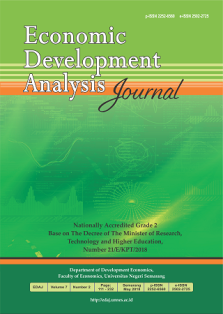Is Educated Labor Really Productive?
Abstract
Improving the quality of human resources through education is believed to increase labor
productivity. The higher the investment in education, the greater the potential for someone to gain
knowledge, expand access to jobs, and increase productivity. However, the increases in the number
of educated workforces, truly unbalanced with the increase with aggregate productivity. The
purpose of this study is to analyze at which one of the levels of education has the greatest
contribution to increasing productivity. In order to bring the research in macro level, we used
Mincer equation calibrated by Bils and Klenow (2000) to develop a human capital model. This
kind of research formed in micro level and very rarely research is done at the macro level.
Therefore, by using calibration from Bils and Klenow (1992), this study tries to bring the mincer
model to the macro level. This model estimates by panel regression method and cointegration
method (for identification long run existence) and using data from the period of 2010-2018. The
results of the study show a positive integration between the level of education towards work
productivity. The fact that vocational education is aimed at preparing workforce has no significant
effect on aggregate productivity. The result driven us to conclusion that education has not been
considered a human capital factor but signaling factor; schooling level of labor was not a driven
factor to labor productivity, but the years of experience did and labor is tended to taking education
just for formal reason not for academic reason.


